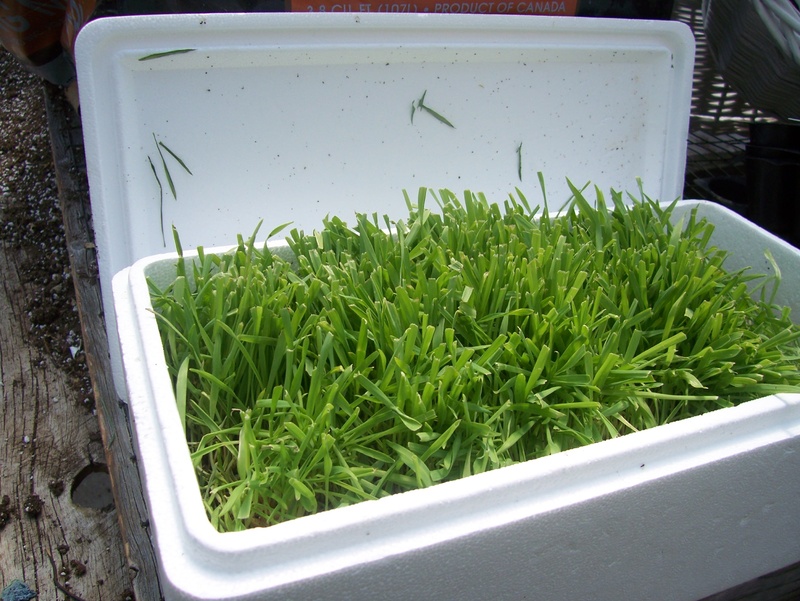Gardeners know how difficult it is to keep insects from eating their plants while in the garden. And when they get hit with aphids or whitefly in their indoor plants, that can be even worse.
Now, think about controlling harmful insects in a commercial greenhouse, where local business operators grow from seeds or plugs (really tiny young plants) the seedlings you are going to be putting in your containers and beds this year.
If those nurseries have major problems with insects, it could put them out of business.
Most greenhouse operators use a method called integrated pest management, in which a wide variety of biological controls are used to keep harmful insects under control.
Joe Viscone, the third-generation operator at High Avenue Greenhouse in Scarborough, calls it “bugs eating bugs.” And he says he is working toward eliminating the use of all chemical pesticides in his operation.
As an example, he uses a type of wasp to control aphids in the greenhouses, but to do that, he first has to bring in some aphids to feed the wasps in the early stages of the process.
“If you ever told me I would be bringing aphids into the greenhouse, I would have said you were nuts,” Viscone said. “But the process really works.”
James Dill, a pest-management specialist at the University of Maine Cooperative Extension in Orono, said almost all nursery operations in the state use integrated pest management in some of their greenhouses.
The aphids that Viscone brought into his greenhouse would not do any damage to his plants, Dill said, unless he were growing grasses. The aphid is brought in on barley plants and is a grass-feeding aphid. But the wasps will eat a wide variety of aphids – including the ones that would eat the seedlings in the greenhouses.
Dill said the Tri-State Greenhouse Association holds daylong classes every January — one each in Maine, New Hampshire and Vermont – on integrated pest management and, specifically, biological controls. Maine’s session is usually held at Longfellow’s Greenhouses in Manchester.
The one problem that commercial greenhouses have is that sometimes customers take home plants that have beneficial insects on them, and are not happy if the process has not been explained to them, Dill said.
“To a consumer,” he said, “a bug is a bug is a bug.”
But the system is popular.
“I think you will find that most greenhouses have some portion of their operation trying biological controls,” Dill said. While small operations might be entirely biologically controlled, larger operations with a dozen or so greenhouses will have three or four of them with biological controls.
The beneficial insects have to be reintroduced every year, largely because most Maine greenhouses shut down for two or three months every winter.
“That is part of IPM, because you freeze all the pests and start fresh,” Dill said.
Biological controls are not just bugs eating bugs, however. In some cases, beneficial bacteria and fungi are introduced into the system that will control certain pests.
Dill said that using biological controls is usually more expensive than using chemical pesticides in the greenhouse, but that there are advantages that make the extra cost worthwhile.
If you use chemicals, you have to store them properly and take care of them. And the chemicals have to be applied by someone with a pesticide applicator’s license.
In addition, there is the benefit of keeping the chemicals out of the environment and, if the greenhouse owners do some marketing, they can promote that they are not using pesticides.
But, Dill said, if the harmful insects get out of control, “we tell people to use some sort of pesticide to knock the problem down, and then bring in biological controls. Then you can introduce and follow IPM.”
Viscone said for him, the biological controls are just the start. He is hoping to eventually eliminate pesticides and go with all-organic fertilizer. But, he says, it has to be done one step at a time.
Tom Atwell can be contacted at 791-6362 or at:
tatwell@pressherald.com
Send questions/comments to the editors.



Comments are no longer available on this story